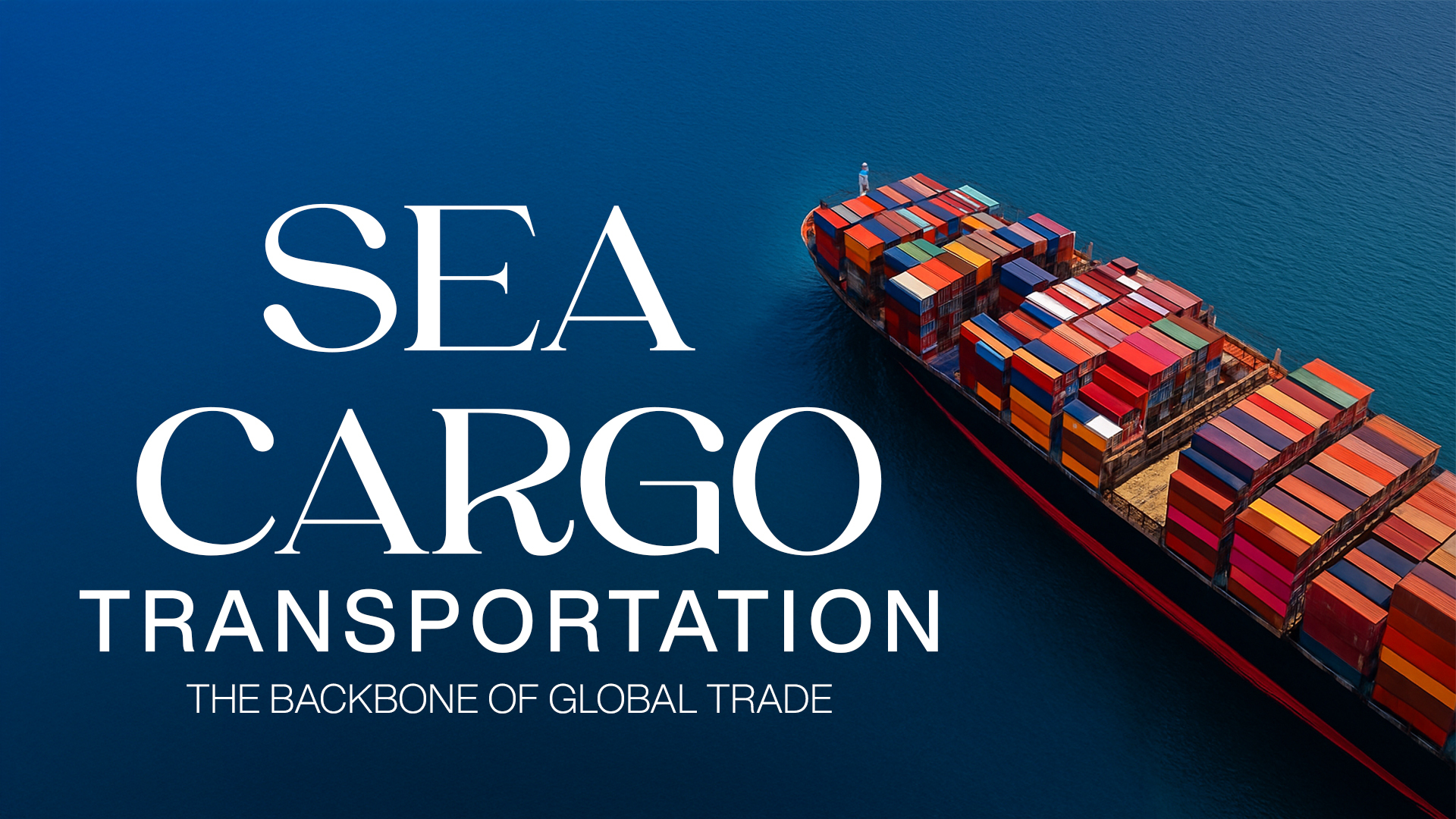- by Admin
- 02 August, 2025
- 8 min Read
Sea Cargo Transportation: The Backbone of Global Trade
Sea cargo transportation may not make daily headlines, but it quietly keeps the wheels of global trade spinning. Nearly 90% of the world's goods are transported across oceans, carried by vast vessels that link continents, economies, and industries. From electronics to grain, from machinery to vehicles—sea cargo is the workhorse of international logistics.
But there’s more to sea cargo transportation than just shipping goods across borders. It involves complex routing, regulatory compliance, specialized cargo handling, and careful decision-making. In this guide, we’ll explore the types of cargo and vessels, essential logistics elements, and the role of freight forwarders. We’ll also cover the pros, cons, and challenges businesses must consider before choosing this method of transport.
What is Sea Cargo Transportation?
Sea cargo transportation refers to the shipment of goods by sea using commercial vessels. It is the preferred mode of transport for bulky, heavy, or large-volume consignments over long distances, offering a cost-effective and scalable solution.
Goods are usually loaded in containers (standardized steel boxes), though some are transported in bulk form or special packaging, depending on the cargo type. Sea cargo is a foundational pillar of international trade—connecting manufacturers, suppliers, and consumers across oceans.
Types of Cargo in Sea Shipping
Not all cargo is created equal. The maritime industry handles a wide array of goods, and each type requires a specific approach to storage, safety, and handling:
1. Dry Bulk Cargo
Includes commodities like coal, wheat, cement, and ore. These are often poured directly into ship holds.
2. Liquid Bulk Cargo
Items such as petroleum, chemicals, or liquefied gases. Requires specialized tankers to ensure safety and temperature control.
3. Containerized Cargo
The most common cargo today. Packaged goods are loaded into containers for easy stacking and intermodal transport.
4. Refrigerated (Reefer) Cargo
Perishable goods like food, medicine, or flowers that require cold storage during transit.
5. Breakbulk or Project Cargo
Oversized, irregular, or heavy equipment that doesn't fit in containers—typically loaded piece by piece.
Types of Vessels Used in Sea Cargo Transportation
Each vessel type is engineered for specific cargo profiles. Choosing the right vessel is a key part of logistical planning:
- Container Ships: Carry containerized cargo and are widely used in global trade.
- Bulk Carriers: Built for loose dry cargo like coal and grain.
- Tankers: Specialize in transporting liquids and hazardous chemicals.
- Reefer Ships: Designed to maintain consistent temperatures for perishable items.
- Ro-Ro Vessels: Ideal for vehicles or machinery that can be driven on and off.
- Multipurpose Ships: Adaptable vessels for mixed cargo loads.
Key Aspects of Effective Sea Cargo Transportation
Beyond moving goods from Port A to Port B, successful sea cargo transportation hinges on multiple factors:
- Proper Packaging Cargo must be secured and resistant to humidity, motion, and stacking pressure.
- Documentation Includes bill of lading, packing list, certificate of origin, and customs declarations.
- Customs Compliance Ensuring goods meet import/export laws at origin and destination.
- Transit Time Planning Ship routes, transshipment stops, and weather impact overall duration.
- Insurance Coverage Marine insurance protects against loss, theft, or damage during transit.
- Port Operations Handling efficiency, equipment, and port congestion directly affect cost and delivery timelines.
The Role of Freight Forwarders in Sea Cargo Transportation
Freight forwarders are not just intermediaries—they’re the architects of international shipping strategies.
Their roles include:
- Coordinating pickup, warehousing, and vessel booking
- Preparing necessary documents for customs and legal compliance
- Managing cargo consolidation (especially in LCL shipments)
- Monitoring shipping schedules and handling disruptions
- Providing consultation on routes, transit time, and cost optimization
By handling the complex logistics behind-the-scenes, freight forwarders allow shippers to focus on their core business.
Choosing the Right Shipping Option
Not every shipment needs a ship—but for certain cargo, nothing else makes sense. Here’s when sea cargo is the right fit:
| Criteria | Sea Cargo Transportation |
|---|---|
| Volume | Ideal for large or heavy loads |
| Cost | More economical over long distances |
| Urgency | Not suitable for tight deadlines |
| Environmental Impact | Lower emissions per unit compared to air |
| Cargo Flexibility | High—supports multiple cargo types |
If your supply chain is flexible on time but firm on budget, sea cargo transportation offers a well-balanced solution.
Advantages of Sea Cargo Transportation
- Economies of Scale Ships can carry thousands of containers—dramatically reducing per-unit costs.
- Versatility Handles nearly all cargo types, from frozen fish to industrial cranes.
- Global Reach Connects over 5,000 ports worldwide.
- Intermodal Compatibility Containers can easily transfer from ship to rail or truck.
- Lower Carbon Footprint Per ton-mile, ships emit fewer greenhouse gases than air or road transport.
Disadvantages of Sea Cargo Transportation
Despite its strengths, sea shipping isn’t perfect. Here are some drawbacks:
- Slower Transit Ships take weeks to complete transcontinental routes.
- Weather Vulnerability Storms, rough seas, or port strikes can delay schedules.
- Documentation Complexity Navigating international laws and customs processes requires expertise.
- Additional Costs Port handling, demurrage fees, and storage can add up if not planned properly.
Challenges in Modern Sea Cargo Shipping
The maritime sector faces a unique set of evolving challenges:
- Port Congestion Delays caused by overloaded terminals and slow customs processes.
- Changing Regulations IMO standards now require reduced sulfur emissions, raising operational costs.
- Security Risks Piracy in high-risk zones and cyber-attacks on shipping networks.
- Supply Chain Disruptions Events like pandemics, wars, or canal blockages affect global shipping flows.
- Crew Shortages Skilled seafarers are increasingly hard to find, affecting reliability.
